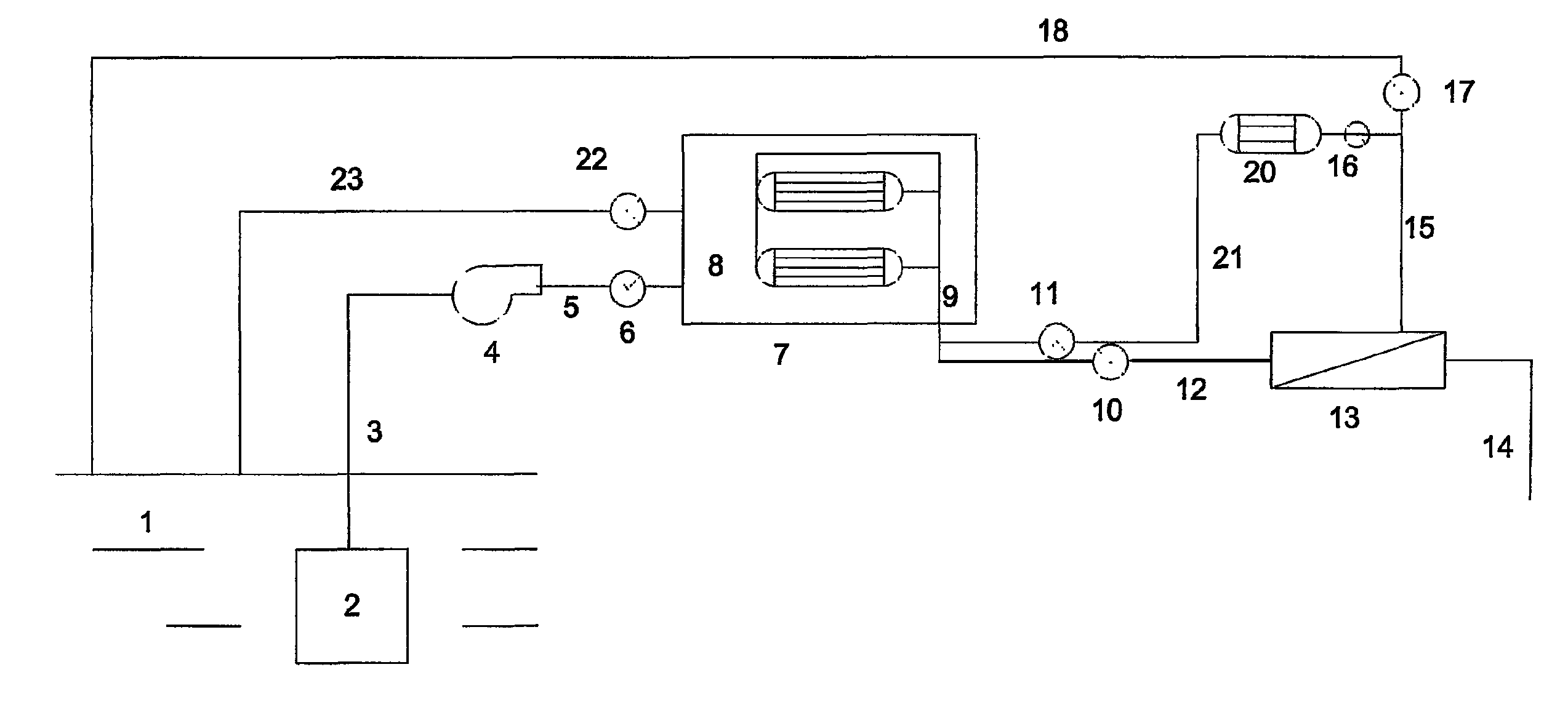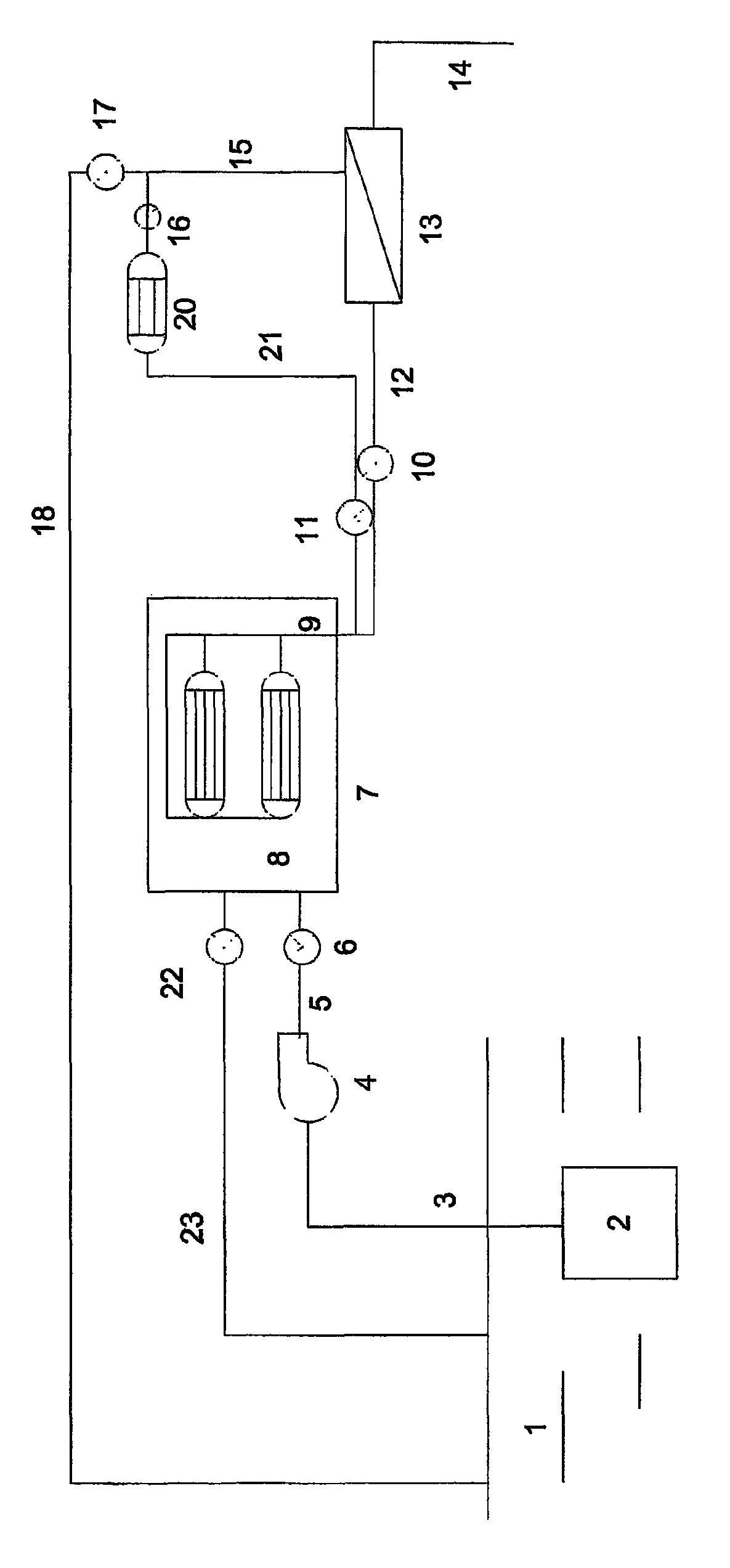Process and apparatus for purifying impure water using microfiltration or ultrafiltration in combination with reverse osmosis
a technology of impure water and microfiltration, which is applied in the direction of sedimentation settling tanks, multi-stage water/sewage treatment, separation processes, etc., can solve the problems of reverse osmosis concentrate scales or particles, filter clogging with particulate matter, and particle or biological material could in fact foul, so as to prevent particulate fouling
- Summary
- Abstract
- Description
- Claims
- Application Information
AI Technical Summary
Benefits of technology
Problems solved by technology
Method used
Image
Examples
Embodiment Construction
[0057]The invention will now be more particularly described with reference to the drawings. Specifically with reference to FIG. 1, Item 1 represents the brine which is to be filtered. The brine is taken in by way of a feeder pump 2, which moves the brine along line 3, through pump 4, along line 5 and through valve 6, which during filtration is open leading the seawater into primary microfiltration or ultrafiltration unit 7. Feeder pump 2 may also include a coarse or pre-filtration device. In primary microfiltration or ultrafiltration unit 7 are housed banks of modules of the type which have hollow fibres. The contaminated water passes along the outer side of the hollow fibres and produces clear water in the lumen of the fibres. The clear filtered water exits the primary micro-filtration or ultrafiltration unit at 9. In normal use, valve 10 is open and valve 11 is shut and the micro-filtered water, which is still saline, passes along line 12 to reverse osmosis unit 13. Reverse osmosi...
PUM
| Property | Measurement | Unit |
|---|---|---|
| residual | aaaaa | aaaaa |
| physical | aaaaa | aaaaa |
| volumes | aaaaa | aaaaa |
Abstract
Description
Claims
Application Information
 Login to View More
Login to View More - R&D
- Intellectual Property
- Life Sciences
- Materials
- Tech Scout
- Unparalleled Data Quality
- Higher Quality Content
- 60% Fewer Hallucinations
Browse by: Latest US Patents, China's latest patents, Technical Efficacy Thesaurus, Application Domain, Technology Topic, Popular Technical Reports.
© 2025 PatSnap. All rights reserved.Legal|Privacy policy|Modern Slavery Act Transparency Statement|Sitemap|About US| Contact US: help@patsnap.com


